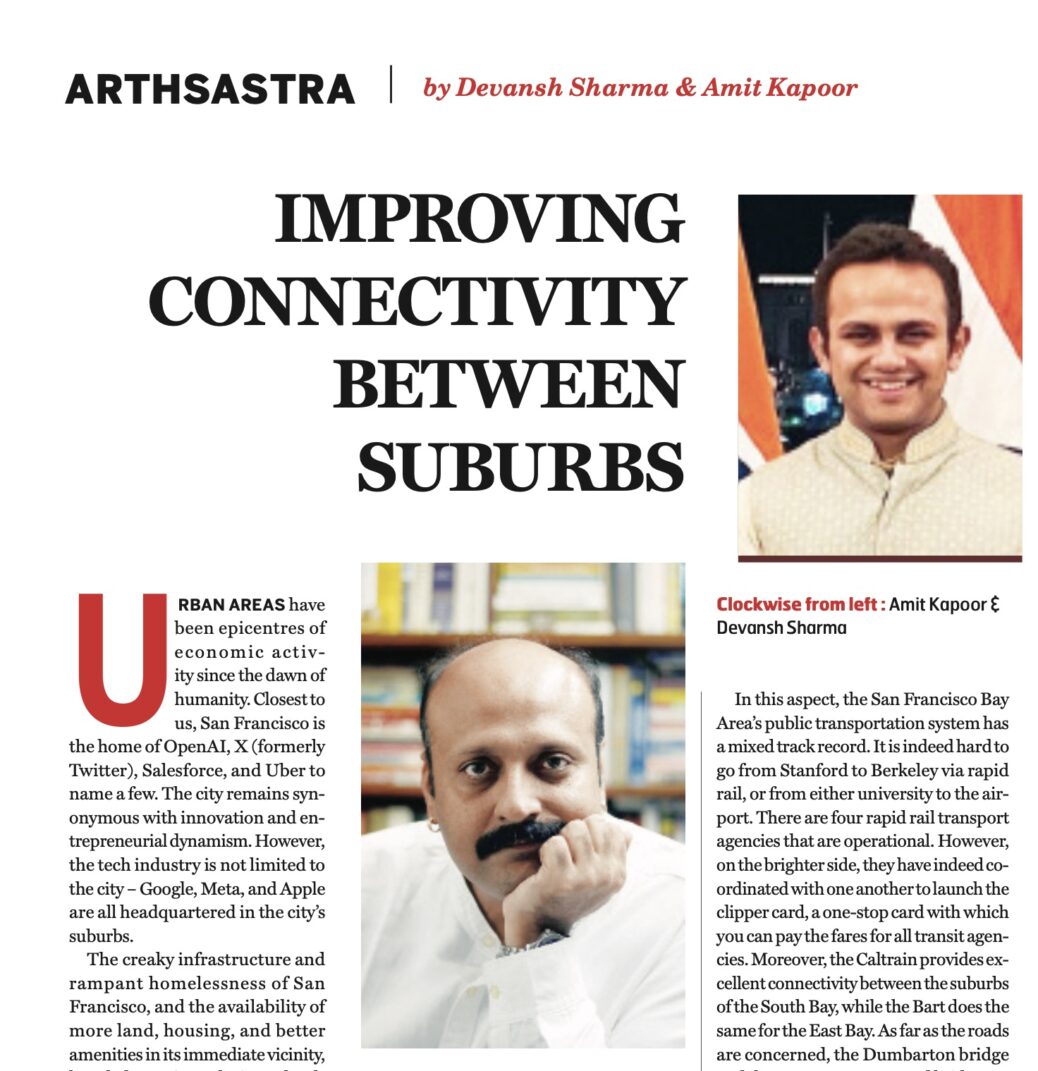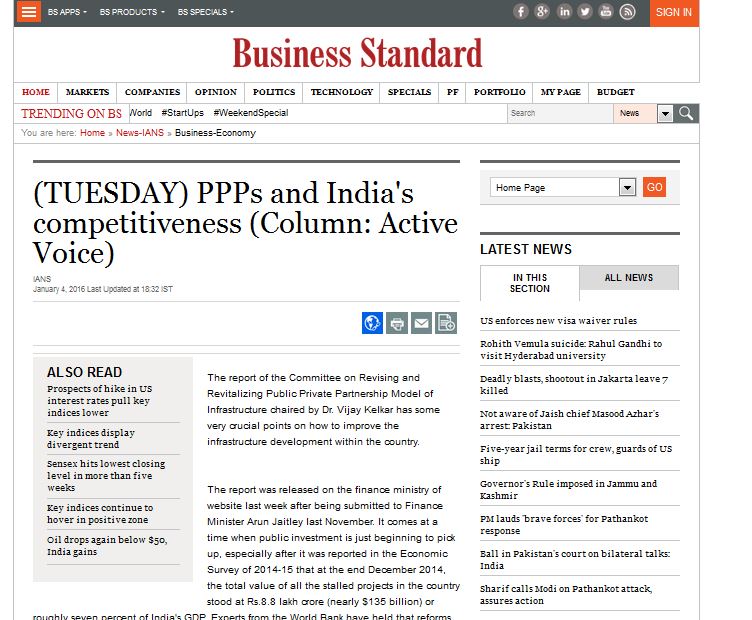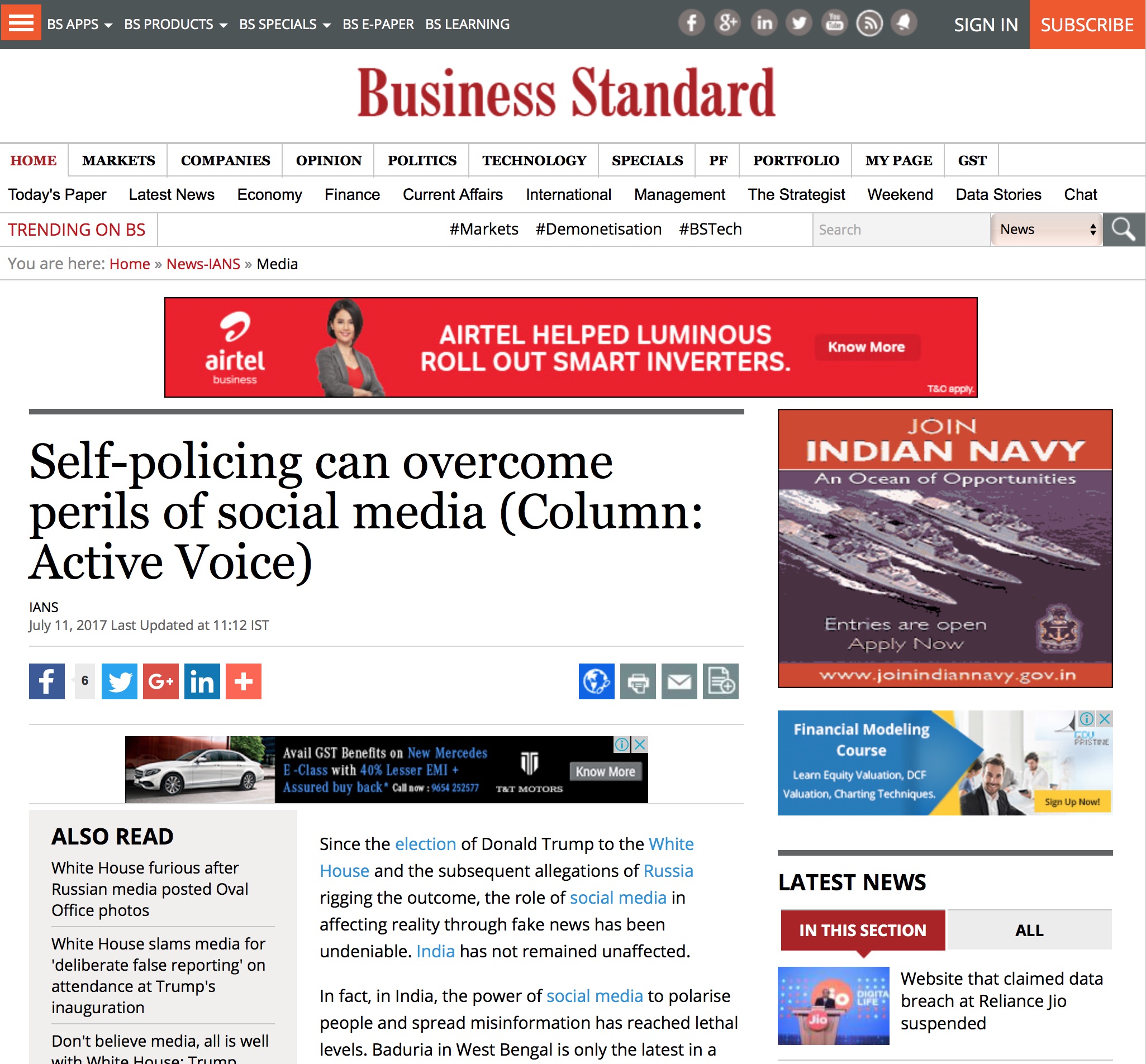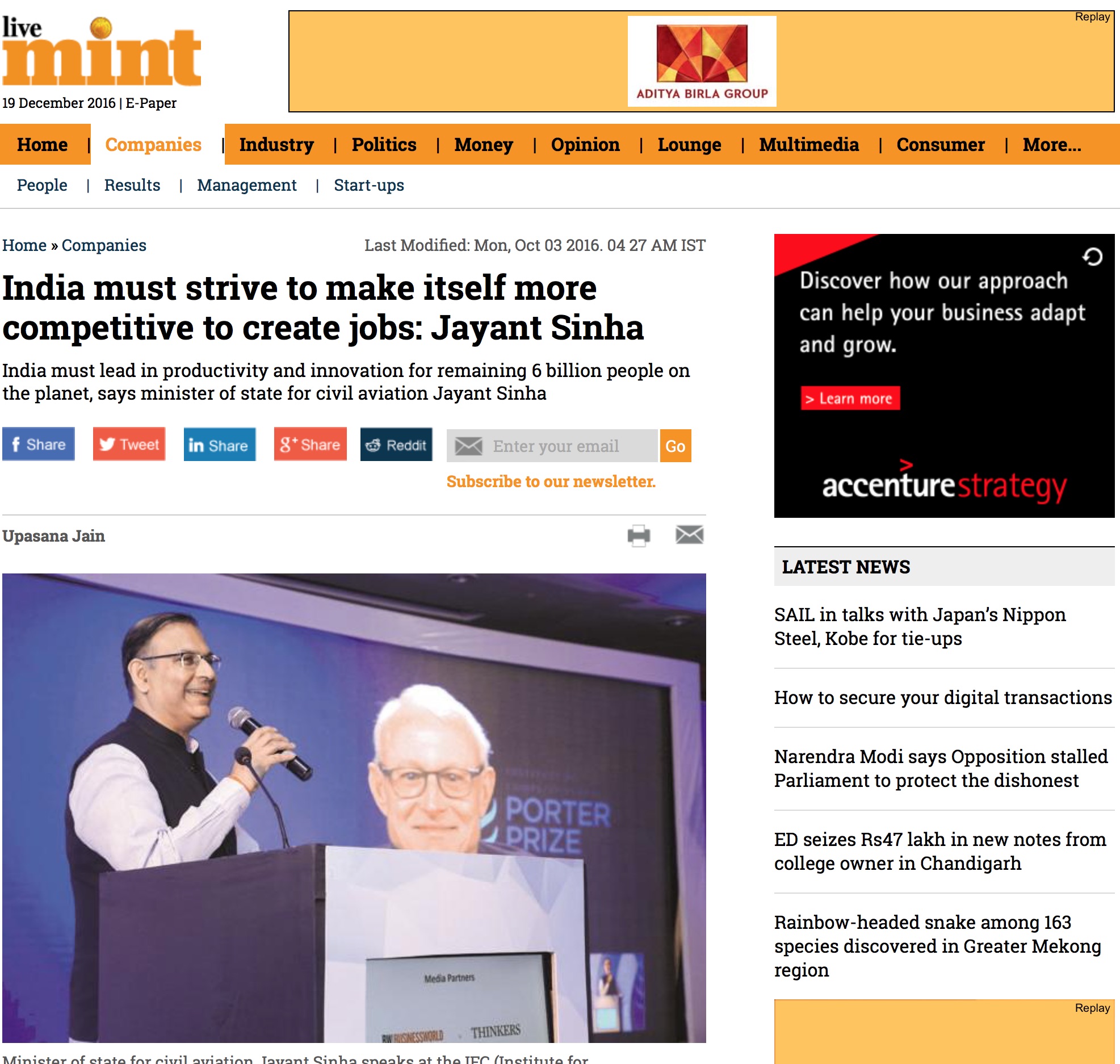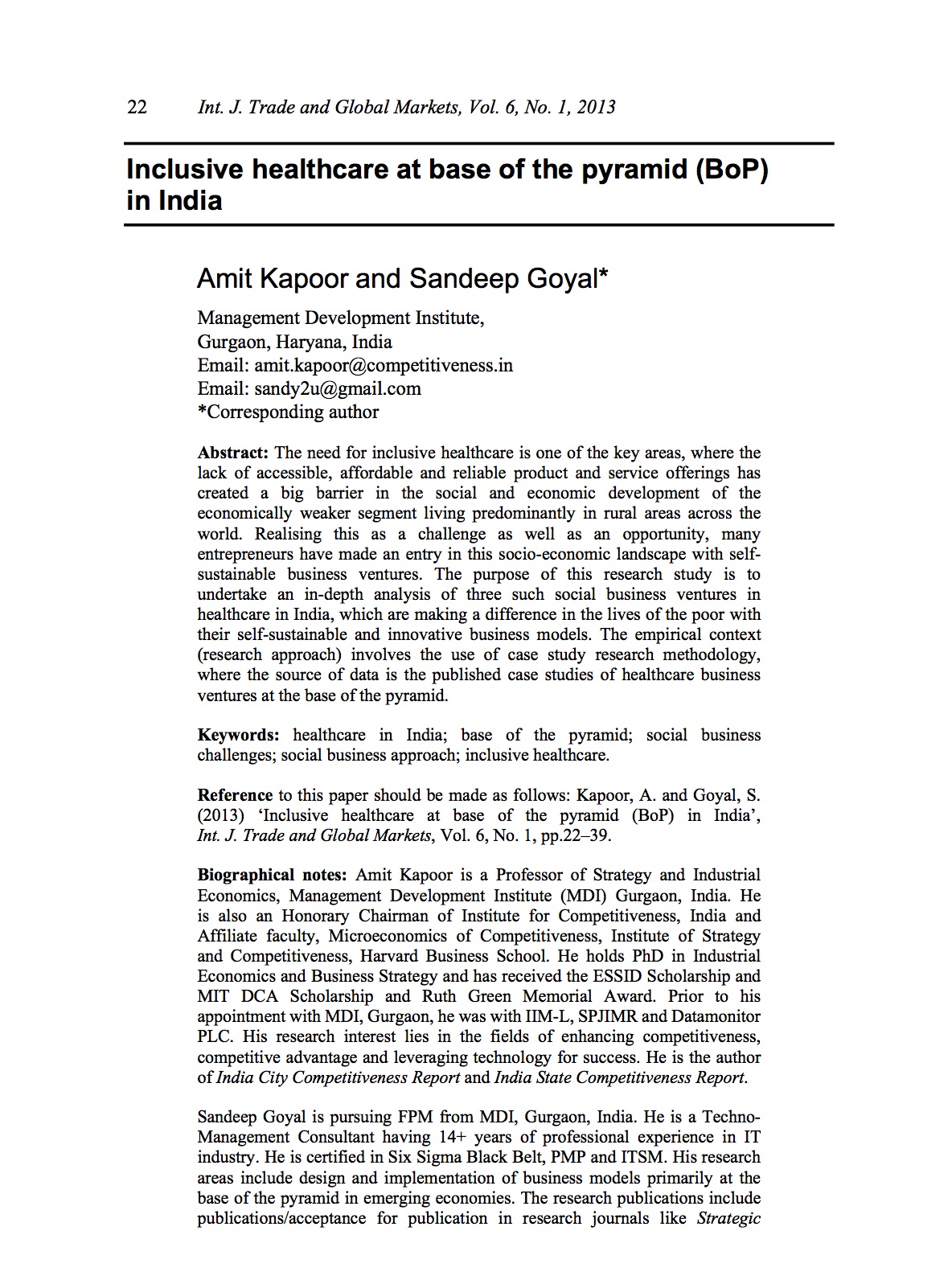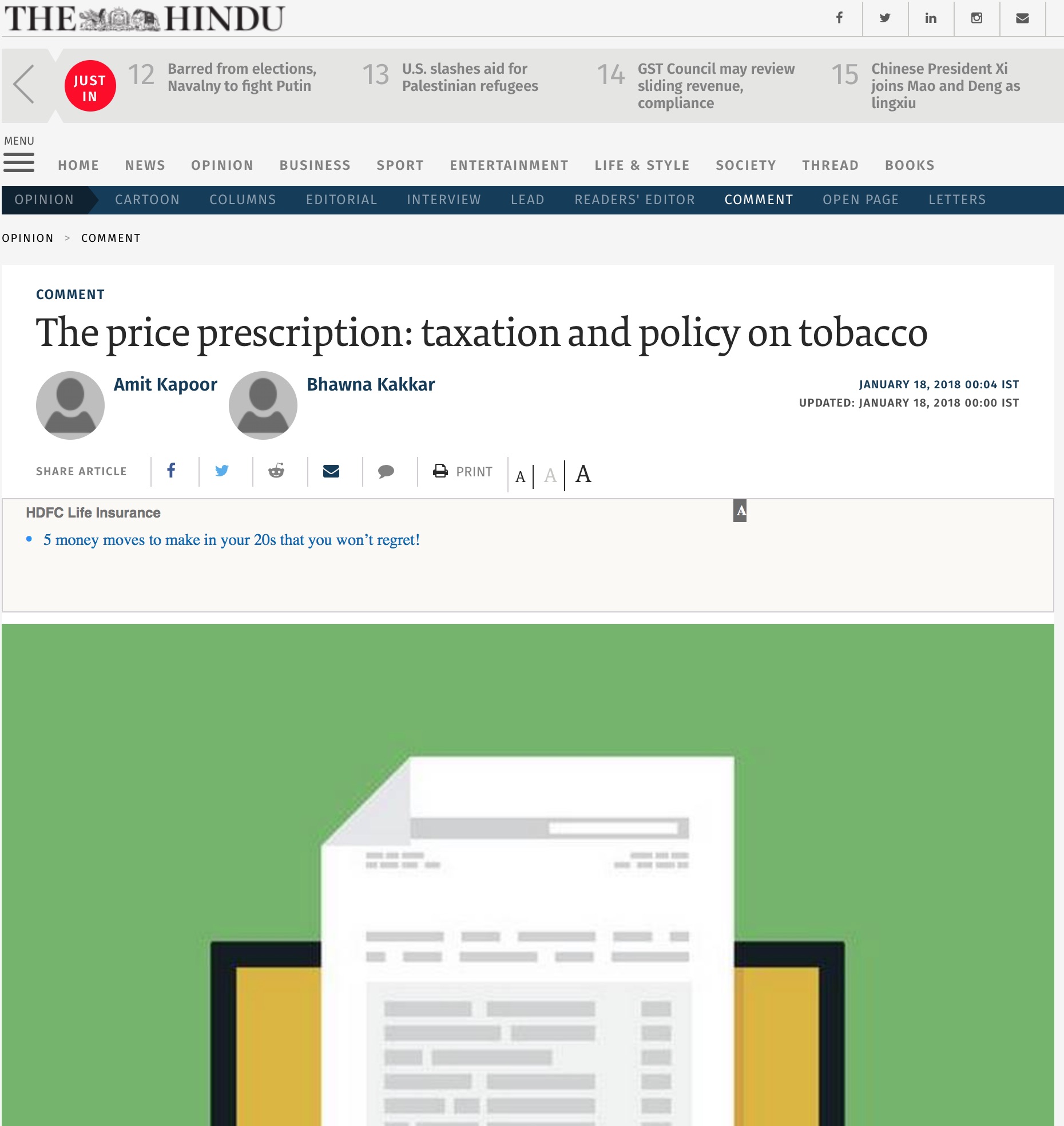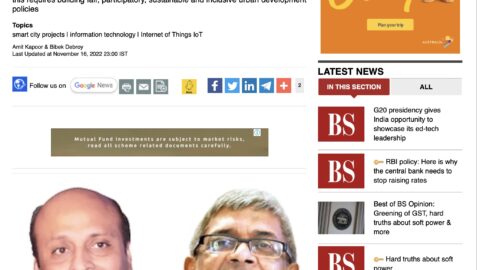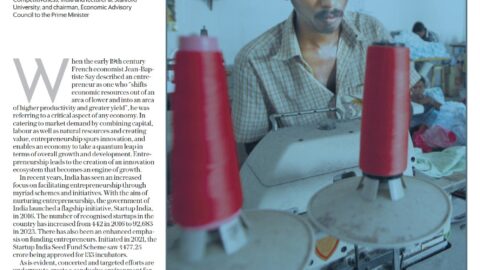By Devansh Sharma and Amit Kapoor
Urban areas have been epicenters of economic activity since the dawn of humanity. Closest to us, San Francisco is the home of OpenAI, X (formerly Twitter), Salesforce, and Uber to name a few. The city remains synonymous with innovation and entrepreneurial dynamism. However, the tech industry is not limited to the city – Google, Meta, and Apple are all headquartered in the city’s suburbs. The creaky infrastructure and rampant homelessness of San Francisco, and the availability of more land, housing, and better amenities in its immediate vicinity, have led to major tech giants developing their headquarters in the suburbs of San Francisco but not the city itself. We see this in the Seattle area too – Microsoft chose to establish their headquarters in Redmond, not the main city itself. The key observation here is that while cities remain the anchors of this ecosystem of innovation, significant economic activity has been offloaded to their suburbs. We are seeing a similar situation emerge in India. Our old city cores are woefully neglected and underserved, while the focus of all development is towards new suburbs (Kapoor and Debroy). As the suburbs of our major cities grow into important centers of innovation in their own right, it is imperative that our urban development planners work on improving the connectivity between suburbs, not just between suburbs and the city centers.
In this aspect, the San Francisco Bay Area’s public transportation system has a mixed track record. It is indeed hard to go from Stanford to Berkeley via rapid rail, or from either university to the airport. There are four rapid rail transport agencies that are operational. However, on the brighter side, they have indeed coordinated with each other to launch the clipper card, a one stop card with which you can pay the fares for all transit agencies. Moreover, the Caltrain provides excellent connectivity between the suburbs of the South Bay, while the Bart does the same for the East Bay. As far as the roads are concerned, the Dumbarton bridge and the San Mateo-Hayward bridge are lifelines of connectivity between the East and South Bay.
The Seattle area has an efficient public rail system that not just connects the suburbs to the city centers but to each other too. The Link light rail and Sounder Commuter rail seamlessly connect the entire area. Importantly, the Link light rail connects the University of Washington to the airport through the city center. In a few months the Link Light Rail will connect the important suburbs of Redmond and Bellevue too.
The NCR is a prime example of how there should be more focus on improving connectivity between suburbs, not just between the suburbs and city centers. While the Delhi metro is a stellar of the Central and Delhi governments, there is no direct metro line between Gurugram and Noida – the two upcoming centers for innovation. Neither are there any efficient car routes that can take a person from one suburb to another in less than 60 minutes. For both options, metro or car, one has to first go to New Delhi and then go towards the destination suburb. Ideally, there should be a metro line connecting both Gurugram and Noida (with stoppages in Faridabad). Besides that, there should be at least a six-lane expressway between the two suburbs.
The situation in Mumbai is even worse. Mumbai still runs on the old Mumbai local train systems, which are administered by the Central Government through the Ministry of Railways. Few lines of the Mumbai metro are operational. At the same time, the road networks across the city remain congested. Bandra-Kurla Complex (BKC), Andheri, Powai, and Navi Mumbai are emerging as alternative economic hubs to South Mumbai, but there exists little direct connection between the first three and Navi Mumbai. At the same time, Mumbai has developed important sea links that improve connectivity in the metropolitan region: the Bandra-Worli sea link and the recently inaugurated Mumbai Trans Harbor sea link. As a solution to the suburban connectivity problem, urban planners should double down on the creation of these sea links, while developing metro lines connecting the suburbs of North Mumbai with Navi Mumbai.
It would be interesting to do a simple back of the envelope calculation on the financial impact of the time gained if there was better connectivity between two suburbs. Say a person has to go back and forth for work between the two suburbs of Gurugram and Noida every day. Assume that they are earning Rs. 40,000 a month, which translates to Rs. 250 an hour. Currently it takes about eighty minutes to get from one suburb to another. That means 160 minutes are consumed by the commute of that person everyday. If this time were to be halved due to better connectivity, then that person would gain an hour and twenty minutes every day. That would translate to a gain of around 330 rupees per day. If there are 100,000 such persons in Gurugram, it would result in a gain of 3.3 crore rupees per day. Every year, this would mean an economic gain of 850 crore rupees to the NCR’s economy.
With suburbs emerging as major economic hubs in their own right, it is important for city planners to focus their efforts on improving connectivity between them rather than viewing suburbs as mere offshoots of cities. The solutions are clear and lying in plain sight – create multiple-lane expressways and expand existing rapid rail networks to connect our suburbs. Such an approach will not only ease the lives of those living in these suburbs, but also contribute to sound economic progress.
(Amit Kapoor is chair, Institute for Competitiveness and lecturer, USATMC, Stanford. Devansh Sharma is doing his MS and student of Dr Kapoor in his course on Competitiveness and Innovation at Stanford).
The article was published with Business World on March 13, 2024.

